|
The M13/40 was designed to be everything the M11/39 was not: an affordable, sturdy, well armed tank (a 47mm gun in a fully traversing turret was quite deadly in 1937, when the tank was designed). With more than 700 vehicles built, the M13/40 was the backbone of Italian tank divisions between 1940 and 1941; however, it was severely underpowered, the bad quality of steel caused frequent crackings, it lacked an efficient sand filtering system. Moreover, the fact that it was kept in the frontline much longer than reasonable created the final opinion, partly undeserved, of a poorly conceived tank.
When it appeared in late 1941, the M14/41 was already obsolete, because the improvements introduced (notably, a more powerful diesel engine) could not compensate for the lack of modifications in other vital sectors (the armament remained unchanged). With another 700 vehicles built, the M14/41 substituted its older brother during the late 1941-late 1943 period.
Some external changes were gradually introduced during the lifespan of both M13/40 and M14/41, so that three " production series" of the first one and two of the second one are conventionally recognized. Identifying each one is not difficult, but essential when planning the build of a model.
M13/40 1st serie (100 vehicles, June 1940-autumn 1940)
Vehicles from the first production serie were the ones which operated in the Balkan war and early north african campaign.
- Long and smooth fenders, without any lateral reinforcements, with vertically straight anterior borders having a small oval hole in the inner side for track inspection (identical to the M11/39 fenders).
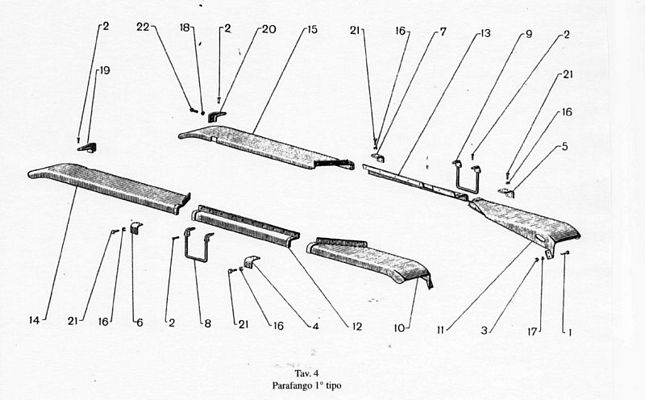
- Two posterior spare roadwheels.
- Jack on the front left fender.
- Central reinforcement on mufflers.
- Early style turret roof.
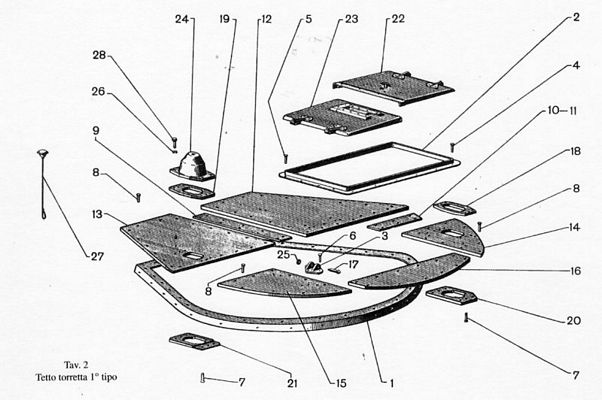
- Early "box shaped" posterior radiator cover, with an anteriorly placed cap. Longitudinal outlet radiator grills.
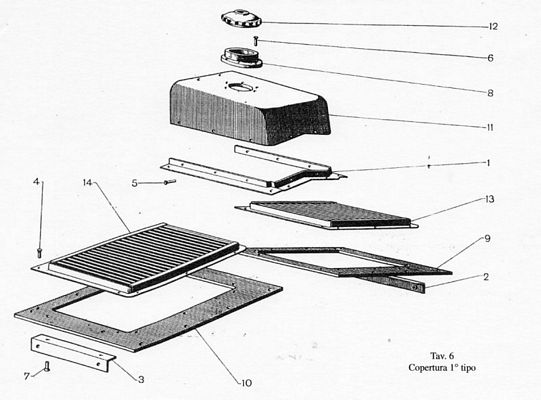
- (After 50th vehicle) track connecting tool on the center of the aft deck.
- (After 50th vehicle) Onagro instead of FIAT starter on the posterior plate.
|
 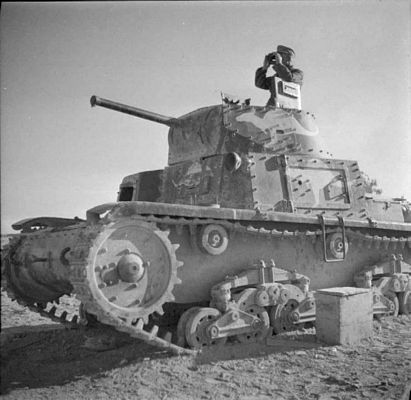 |
M13/40 2nd serie (200 vehicles, late autumn 1940-spring 1941)
Vehicles from the second production serie operated in the north african campaign.
- Short fenders, with lateral reinforcements, with vertically straight anterior borders having a small oval hole in the inner side for track inspection; protection on lateral ladders.
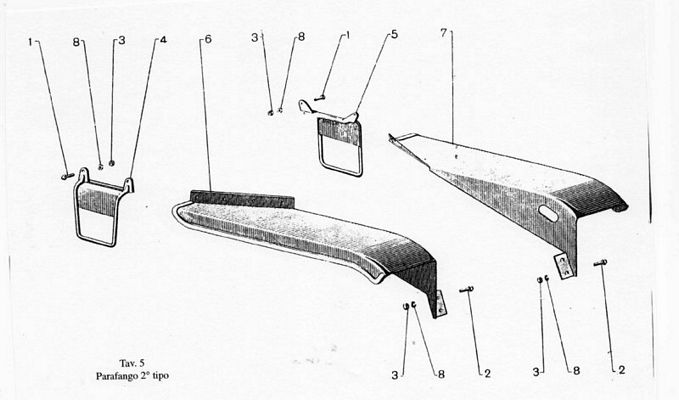
- Only one right posterior spare roadwheel.
- Jack in place of the discarded left posterior roadwheel.
- Early "box shaped" posterior radiator cover, with an anteriorly placed cap. Longitudinal outlet radiator grills.
- Central reinforcement on mufflers.
- (After 50th vehicle) New turret roof, with rectangular hole, covered by a bolted plate, for increased main gun depression.
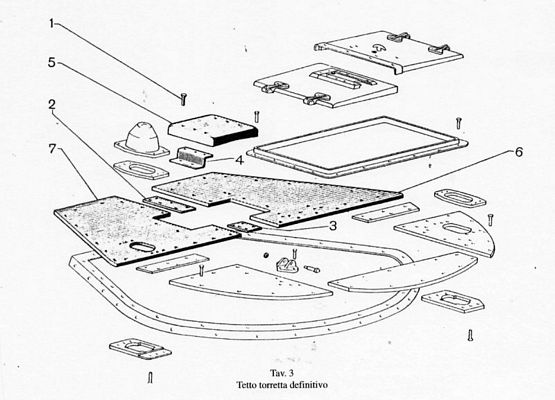
- (Since mid-1941) Radio was installed, with an horizontal support for the antenna.
|
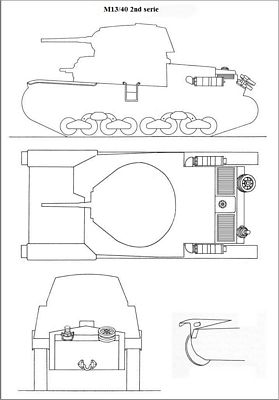 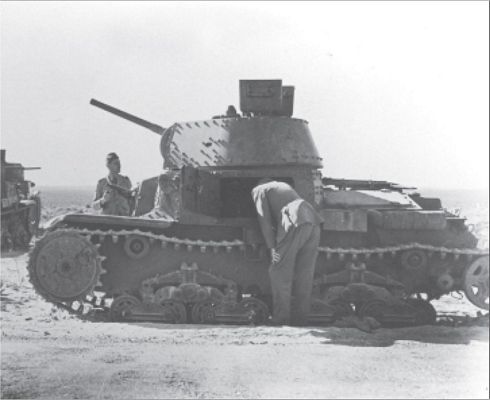
|
M13/40 3rd serie (410 vehicles, spring 1941-autumn 1941)
Vehicles from the third production serie operated in the north african campaign.
- Short fenders, with lateral reinforcements, with vertically straight anterior borders having a small oval hole in the inner side for track inspection; protection on lateral ladders.
- Only one right posterior spare roadwheel.
- Jack in place of the discarded left posterior roadwheel.
- New "mushroom-shaped" posterior radiator cover, with lateral "wings" and a posteriorly relocated cap. Longitudinal outlet radiator grills.
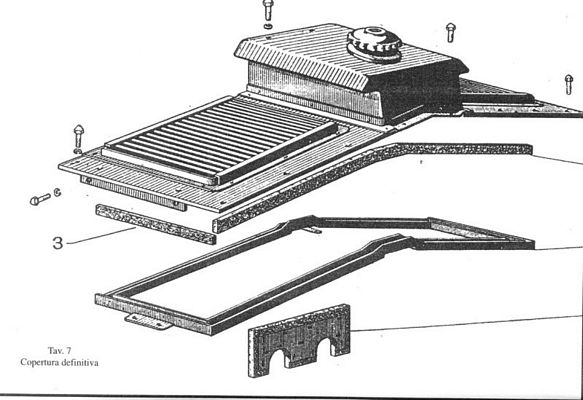
- Smoother mufflers with different supports.
- Rectangular hole on turret roof, covered by a bolted plate, for increased main gun depression.
- Radio was installed, with an horizontal support for the antenna. Some vehicles were converted into Centro Radio vehicles (Radio Center vehicles), with two different radio equipments and two antennae.
|
 
|
M14/41 (695 vehicles, spring 1941-autumn 1942)
Vehicles from the first production serie operated in the north african campaign.
- (After 50th vehicle) return of long fenders, with reinforcement on the outer rim. Compared to long fenders of M13/40 1st serie, frontal edge was longer by 10 cm and had a longer curve radius. Since the 533rd vehicle, the small oval hole was hidden by a small romboid plate. No protection on lateral ladders.
- Gradual introduction of a new engine, with a new engine deck with transversal outlet radiator grills, officially from 490th vehicle.
- Only one right posterior spare roadwheel.
- Jack in place of the discarded left posterior roadwheel.
- New "mushroom-shaped" posterior radiator cover, with lateral "wings" and a posteriorly relocated cap.
- Smoother mufflers with different supports.
- Rectangular hole on turret roof, covered by a bolted plate, for increased main gun depression.
- Radio was installed, with an horizontal support for the antenna. Some vehicles were converted into Centro Radio vehicles (Radio Center vehicles), with two different radio equipments and two antennae.
- (Since 533rd vehicle) mud clearing blades at the drive sprockets.
- Late vehicles received strenghtened support brackets on front fenders, "double-X shaped" reinforcements on fenders, side can supports.
|
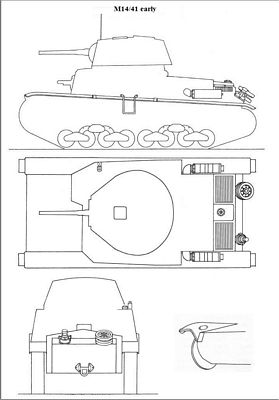 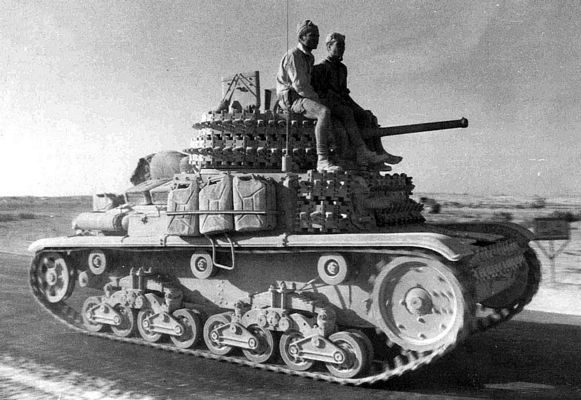
|
|
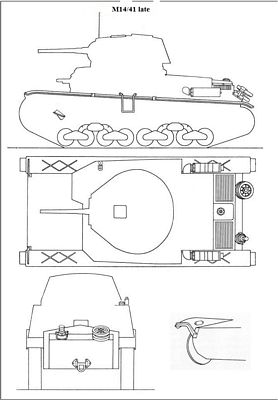 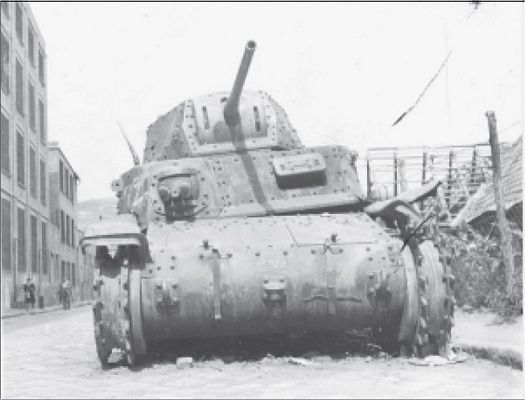
|
References
[1] Carro M - Carri medi M13/40, M14/41, M15/42, Semoventi e altri derivati - Volume primo
Sviluppo, tecnica, comparazioni, Andrea Tallillo, Antonio Tallillo, Daniele Guglielmi, Gruppo Modellistico Trentino di studio e ricerca storica, Italy 2009 ISBN: 978-88-902511-6-0
[2] Italian medium tanks - in action, Nicola Pignato, Squadron/Signal publications Armor 39, U.S.A 2001 ISBN: 0-89747-426-0
|

